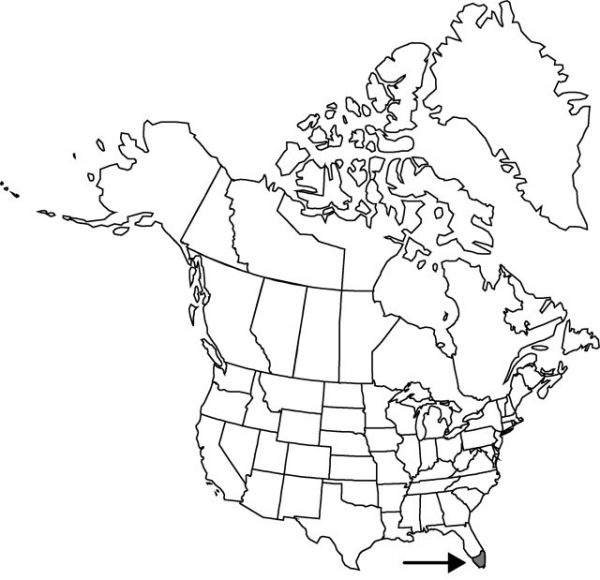Calopogon tuberosus var. simpsonii
Sida 13: 371. 1989.
Plants 20–100 cm or more. Corms globose, 8–22 mm. Leaves: blade strongly curled transversely, linear, 25–50 cm × 3.5–15 mm. Inflorescences green or seldom slightly purple at base, becoming entirely green after flowering, 20–100 cm or more; floral bracts ovate to ovate-lanceolate, subulate, 3–12(–30) mm. Flowers 1–20(–25); dorsal sepal 18–25 × 5–10 mm; lateral sepals sometimes reflexed distally, often narrowed, 15–20 × 7.5–13 mm, apex acuminate; petals 18–25 × 5–10 mm; lip 12–23 mm, dilated end of middle lobe paler color than rest of flower, narrowly anvil-shaped to triangular, 5.5–16 mm wide; column 15–25 × 1.5–2 mm, distal end 4.5–8 mm wide; rostellum absent or present. Capsules ovoid to ellipsoid, 15–25 × 5–8 mm. 2n = 40.
Phenology: Flowering Nov–Jul, most commonly mid–late spring.
Habitat: Seasonally wet, alkaline tropical and subtropical conifer savannas, meadows, and grasslands
Elevation: 0–10 m
Distribution

Fla., West Indies (Bahamas, Cuba).
Discussion
Calopogon tuberosus var. simpsonii can be distinguished from the typical variety of the species based on its strongly transversely curled leaves, the frequently narrowed and pale apex of the middle lip lobe, and its habitat in wet, marly soils. Based on morphology and allozymes (D. W. Trapnell 1995) and on nuclear and chloroplast DNA (D. H. Goldman 2000), C. tuberosus var. simpsonii was determined to be a distinct taxon.
Selected References
None.